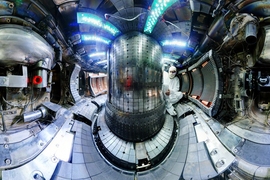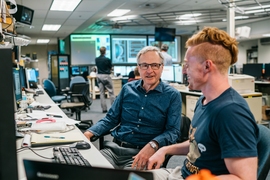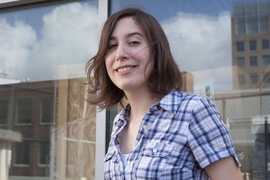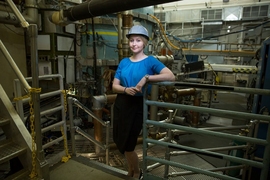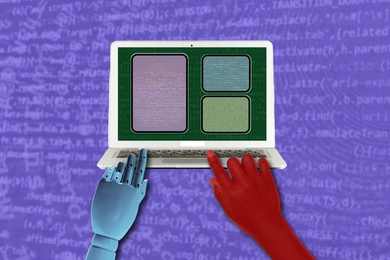“I realized that physics was the most beautiful thing I’d ever studied.”
Graduate student Libby Tolman is reflecting on her high school physics class, where she first sensed the elegance of the subject she would eventually pursue at MIT’s Plasma Science and Fusion Center (PSFC).
“As a child I would throw a ball through the air and wonder why it made a curved shape; I would hold an ice cube in my hand and wonder at the processes that made it melt. And it turned out there are physical models for all those things and you can explain them somehow with math. That was just really beautiful for me.”
As an undergraduate at Princeton University she became excited about the field of fusion energy, and its potential to provide virtually endless carbon-free energy. That’s when she realized that the beauty of physics theory alone was not enough for her.
“I did a lot of theoretical physics research, like how electric and magnetic fields behave on the horizon of a quickly spinning black hole. That was really beautiful, and I liked the elegance of it, but at the same time I was a little bit frustrated. I’m not going to go to a black hole in my lifetime. I wanted something with a more practical application. That’s why I’m here.”
She found the perfect opportunity to merge her love of theory with a practical energy experiment as a physics graduate student at the PSFC, where MIT’s fusion project, the Alcator C-Mod tokamak, was nearing its final run of experiments, recently completed on Sept. 30.
In her first year, with research scientist Jerry Hughes, she helped maintain the daily operation of C-Mod’s Thompson scattering diagnostic, which measures the electron temperature and density in the plasma that fuels the machine. She conducted routine alignment of lasers and collection fibers, and would troubleshoot occasional malfunctions.
“This part of the work has mainly given me sympathy with experimentalists. As a theorist, it's easy to ask, ‘Why can't I just have that piece of data?’ But it turns out that many types of data about plasma are really hard to collect.”
With the data from C-Mod experiments, Tolman presented a poster at this year’s American Physical Society Division of Plasma Physics meeting analyzing the density at the plasma’s edge, which she feels could be key to optimizing the performance of future fusion devices like ITER, a next-generation tokamak experiment being built in France.
“This project has introduced me to an observational-based way of doing physics. I'm most familiar with the type of physics research where you ask a question and do a lot of math to answer it. Experiment is very different; you have a wide variety of actual C-Mod shots and you analyze them to see what you can learn.”
Having experienced the nitty-gritty of daily experimental operation, she is ready to exercise her theoretical side, under the guidance of Professor Nuno Loureiro, a plasma theorist in the Department of Nuclear Science and Engineering. She has already coauthored a paper with him addressing the astrophysical phenomenon of magnetic reconnection, and is ready for the next project: investigating energetic alpha particles in fusion plasmas, which threaten effective plasma confinement when they contact material surfaces inside the tokamak or cause instabilities in the plasma.
The research is related to ARC, a conceptual fusion reactor that uses new high-temperature superconductors to create very strong magnetic fields that can confine the plasma effectively in a more compact machine.
“The PSFC has been interested in using high magnetic fields to achieve superior plasma confinement for a long time,” Tolman notes. “C-Mod is an example of this approach, and ARC would be a next step. It's designed to achieve breakeven as soon as possible, to help speed up the overall development of fusion energy.”
Tolman is specifically interested in evaluating how energetic particles can destabilize the ARC plasma, resulting in degraded confinement, and how such instabilities may be avoided by using very high magnetic field. As she focuses now on her theoretical project, she appreciates that several of the C-Mod scientists she worked with in the control room continue to be supportive of her research.
“Probably the most valuable part of my C-Mod experience is the conversations I've had with people who work the machine. C-Mod scientists have an incredible intuition about how plasmas behave, which has been developed over years of experiments, and I've been able to learn quite a lot from that.”

